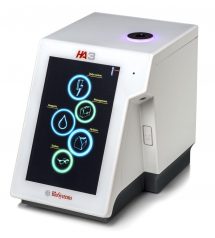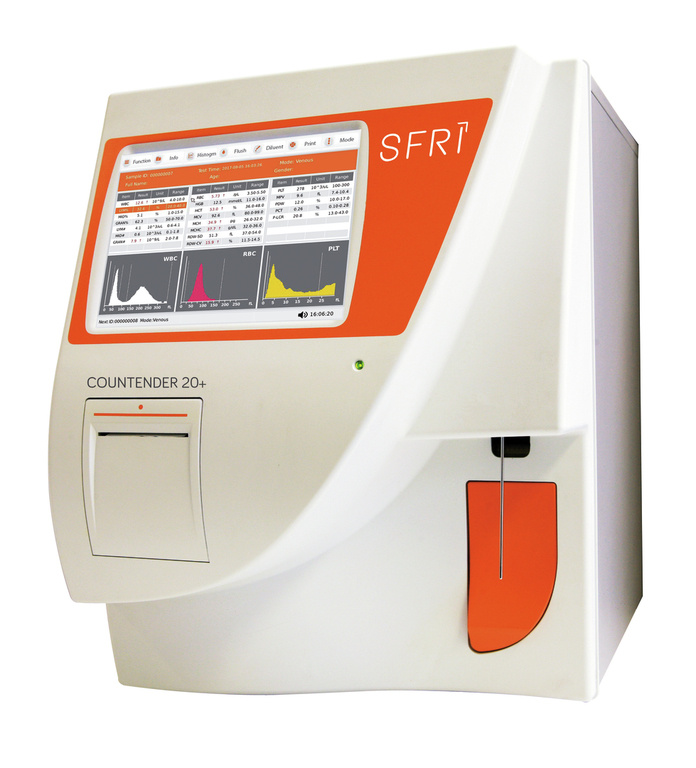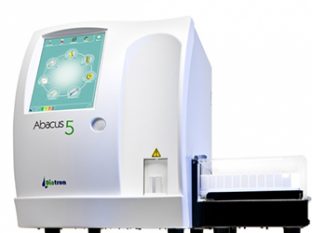
Hematology system
Model: HA3
Manufactured by: Biosystems – Spain
80% less consumption
Compact, easy of use
Open/Closed tube modes
Biosystems offers laboratories a complete hematology system based on an HA3 three-diff. analyzer and specific-reagent particularly suitable for routine laboratories, medical offices and small hospitals.
The Biosystems hematology system establishes a new standard in blood count analysis, providing remarkable laboratory savings in space, time and operating costs.
The HA3 Hematology Analyzer is based on the volumetric impedance method and incorporates microfluidic technology to reduce reagent consumption providing optimal determination of the parameters.
- Compact design
- Two operating modes: open/closed
- 60 t/h closed mode
- Full-color touch screen
- 22 parameters, 3 histograms
- LIS connection; results sent by e-mail
- Remote instrument support
- Consumption management
- Low reagent consumption: 5.5 mL of diluent per test
| Parameters: | WBC, RBC, Hgb, HCT, MCV, MCH, MCHC, RDW sd/cv, PLT, MPV, PCT, PDW sd/cd, P-LCT%, P-LCC, LYM#, MID#, GRA#, LYM%, MID%, GRA%. |
| Histograms: | 3 |
| Measurement principle: | Volumetric impedance method, microfluidics |
| Aspirated sample volume: | 9.6 µL whole blood (open mode)
15 µL whole blood (closed mode) |
| Processed sample volume: | 2.4 µL whole blood (both modes) |
| Speed: | Closed mode: 60 t/h
Open mode: 45 t/h |
| Precision (CV): | WBC<3%, RBC<2%, HCT<3%, MCV<2%, HGB<2%, PLT< 5% |
| Storage capacity: | 100.000 results including histograms |
| Screen: | Touch – Technology: LCD
Size: 10 inches Resolution: 1280 x 800 |
| Connectivity: | 2 USB ports (for external printer, software update, barcode reader)
Ethernet, LIS connection |
| Dimensions: | 263 mm height x 206 mm width x 313 mm length |
| Net weight: | 9,7 kg |
| Power requirements: | 12 Vdc, 5 A |
| Reagent consumption per test: | Diluent: 5.5 mL
System solution: 0.8 mL Lyse reagent: 1 mL |





